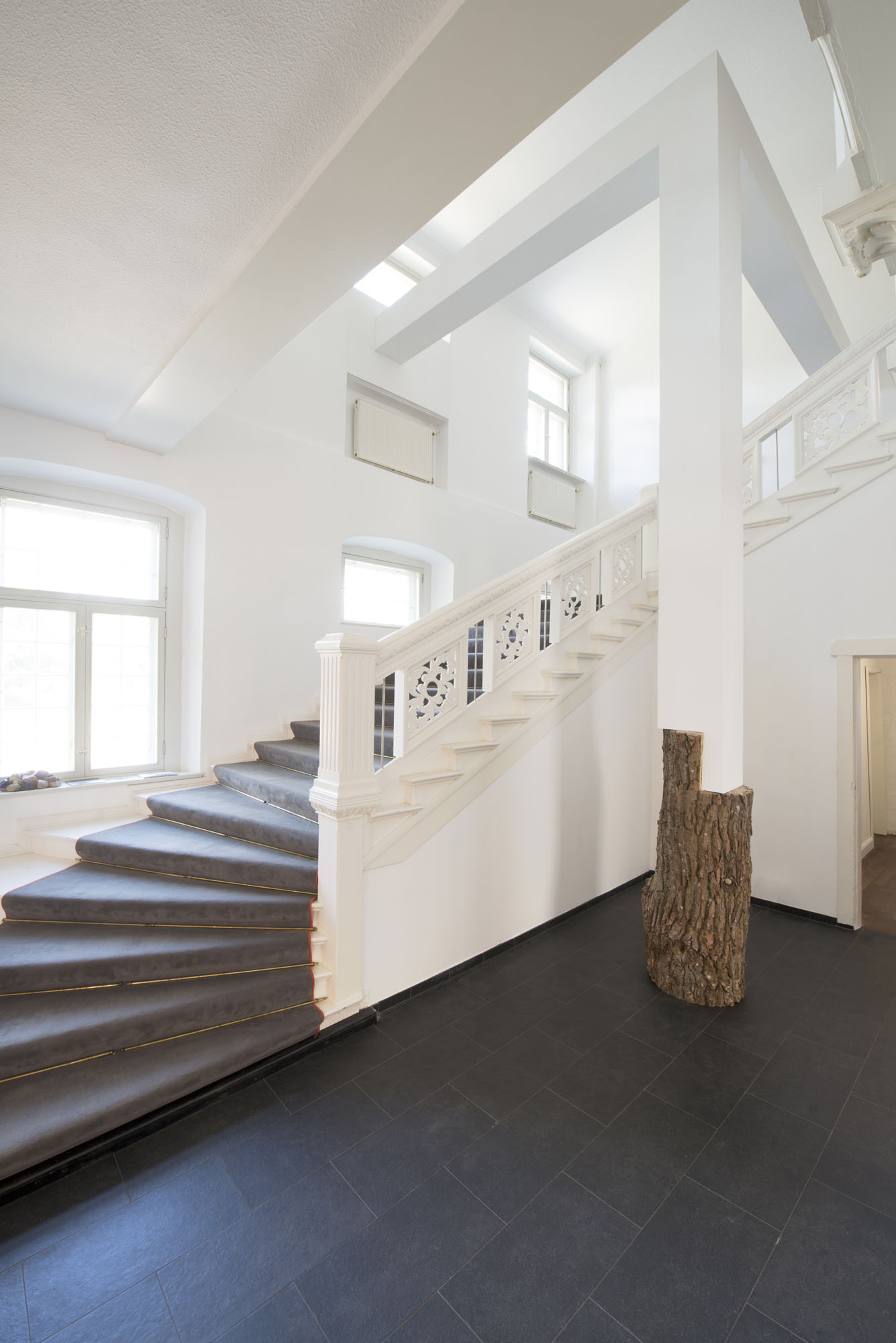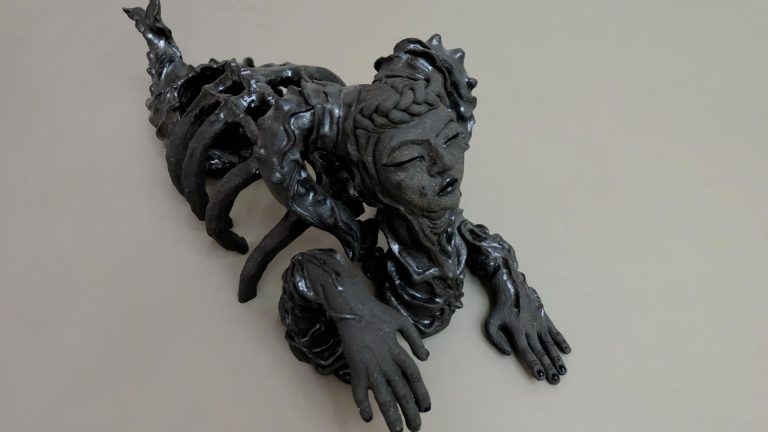Artist: Bram Braam
Exhibition title: What Becomes and What Remains
Venue: Till Richter Museum, Buggenhagen, Germany
Date: August 10, 2019 – January 5, 2020
Photography: all images copyright and courtesy of the artist and Till Richter Museum
Bram Braam’s work seems to overflow due to a remarkable tangible complexity in the material variety of his works and therefore in what precedes the creative act itself. The concept of Utopia turns out to be the fundamental interpretative key that allows one to gain a broader understanding of Braam’s work and somehow untangle the threads that make up the stratification of his works. The word Utopia etymologically derives from the ū = ‘non’ and tópos = ‘place’ and therefore has the the hidden meaning of non-place. This non-place is an impossible place, an imaginary architecture, a vision which points in the direction of a non-futuristic future. Braam deals with this concept in a circular way through a vortex of reinvented materials, found objects, assembled furniture, rags of city walls, and almost any element can be exemplary of a constructivist historicity understood not only in relation to building but also in semantic terms. Architecture, for Braam, can be found in the buildings of Le Corbusier, in abandoned buildings, and in the graphic signs left by a person passing by. It is the historicity of the environmental evolution that Braam prefers to focus upon. But in this vortex of signs that finds completeness in the creation of large sculptures, in which each constituent element is never randomly chosen, it is possible to highlight two trajectories that are indefinitely covered by the term mentioned above: Utopia. These are two lines that are not rectilinear, curved or curved again, and that deal with pairs such as new and old, real and false, natural and artificial, original and remodeled, construction and destruction. Through his works Bram Braam addresses Utopia both as an environmental utopia with a functionalist and constructivist mold that characterized 20th century modernism and as a non-place utopia. It is a fairly complicated dialectic in which what is identified as a possible place with its own recognizable identity becomes non-place as soon as the possibility of its being or of its lasting decay. At the same time we are witnessing the awareness of the non-place as the only place possible. The coexistence of different architectural styles, of maps that correspond to several political periods, of signs that define the experience of an urban or civilized environment – is it even possible to find one that is completely virgin, without residues of humanity? Of elements that highlight the mixture of different styles, sanctioning them with the impossibility to find a beginning and declaring the absolute intertwining of one with the other, are at the base of this non-place place whose complex stratification is always re-proposed differently from the work of Braam. This stratification, this overlap that actually presents itself as a chronological plot, finds a powerful explanation in the artist’s wall works. It is about real walls, parts of cities where the calmness of becoming is tangible, the fascination of non-place as place, the absence of abuse and therefore the presence of a quietness made up of voices from the past and the present that have always and forever looked at a hypothetical future in a utopian way; coming to terms with a real utopia made of rubble and scratched walls.
-Domenico de Chirico, 2019
Bram Braam, What Becomes and What Remains, 2019, exhibition view, Till Richter Museum, Buggenhagen
Bram Braam, The flow of history, materials: found wall, concrete, wood, steel, 2019, 200 x 290 x 5 cm, photography Wolfgang Ganter
Bram Braam, Fragmented history, materials: wood, steel, 121 x 107 x 3,5 cm, 2018, photography Wolfgang Ganter
Bram Braam, What Becomes and What Remains, 2019, exhibition view, Till Richter Museum, Buggenhagen
Bram Braam, Tesserae, Materials: bricks, plaster, concrete, spraypaint, paint, 213 x 4 x 305 cm, photography Wolfgang Ganter
Bram Braam, What Becomes and What Remains, 2019, exhibition view, Till Richter Museum, Buggenhagen
Bram Braam, What Becomes and What Remains, 2019, exhibition view, Till Richter Museum, Buggenhagen
Bram Braam, Future fossils, 80 x 50 x 40 cm, materials: plaster, wood, paint, foam, concrete, 2019, photography Wolfgang Ganter
Bram Braam, Future fossils, 80 x 50 x 60 cm, materials: plaster, wood, paint, foam, concrete, 2019, photography Wolfgang Ganter
Bram Braam, Future fossils, 80 x 50 x 50 cm, materials: plaster, wood, paint, foam, concrete, 2019, photography Wolfgang Ganter
Bram Braam, What Becomes and What Remains, 2019, exhibition view, Till Richter Museum, Buggenhagen
Bram Braam, Outgrowth, 550 x 500 x 600 cm, wood paint, photography Wolfgang Ganter
Bram Braam, Outgrowth, 550 x 500 x 600 cm, wood paint, photography Wolfgang Ganter
Bram Braam, Outgrowth, 550 x 500 x 600 cm, wood paint, photography Wolfgang Ganter
Bram Braam, What Becomes and What Remains, 2019, exhibition view, Till Richter Museum, Buggenhagen
Bram Braam, Signalwirkung, 110 x 3 x 128 cm, materials: paint, white veneer wood, glue, plastic, rubber, concrete, photography Wolfgang Ganter
Bram Braam, Brutal clarity, 250 x 250 x 200 cm, neon cables, 2019, photography Wolfgang Ganter























